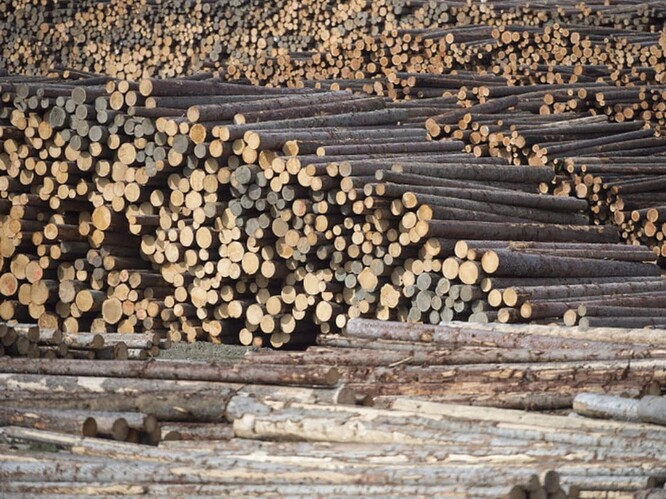Opinion: A dramatic drop in timber availability is putting the benefits created by BC’s forest sector – and its future – at risk
Mill closures and curtailments in B.C. last year led to the loss of 5,000 direct jobs in the forest industry, and another 5,000 indirect jobs in supply chains and services that support the industry. Current conditions in the sector are not only negatively impacting jobs and operations, but also exports, government revenue, and investment in the province.
Reasons for the historic level of disruption have been well-documented. Insects, fire, markets, and policy shifts figure among them.
Ultimately, the uncertainty over access to a reliable supply of timber lies at the heart of much of what ails the B.C. forest sector right now. Without access to timber, sawmills can’t operate. Without sawmills, pulp and paper mills, pellet operations and value-added facilities are unable to stay open. The trickle-down impacts on jobs, families and the economy are piling up.
But getting the sector back on track to deliver the benefits that communities across B.C. rely upon requires more than understanding what the problem is — it requires a willingness to do something about it.
One thing that everyone can agree on is that there is no single way forward. Meaningful change requires decision makers and stakeholders — the provincial government, First Nations, industry, local communities, labour, and contractors — to come together around a portfolio of solutions that can be applied in both the short and long term.
Here are five that would help create more predictable timber supply in B.C. while meeting other important goals for forest health and environmental protection, and First Nations reconciliation.
• Fix current permit development processes to ensure that an environmentally sustainable and economically viable harvest can be consistently achieved. Address delays in issuing harvesting permits that can take two to three years to process. Provide some time and space to figure out how to implement current policies before introducing any more new ones. Build a two-year standing timber inventory. Review the current business model for B.C. timber sales to ensure it is evolving to meet changing conditions and priorities.
• Secure agreements with First Nations that advance progress on critical issues. Embrace new approaches to consultation, forest tenure, revenue sharing, and First Nations land use planning that recognize and respect the province’s reconciliation commitments. First Nations have made it clear they want a greater role in stewardship of the forests as well as a greater role in investing in the future of forest management and wood manufacturing in B.C.
• Expedite new regional tables for Forest Landscape Planning. The provincial government has initiated a more holistic approach to landscape planning and ecosystem management for which there is broadly-based public support. The credibility of the approach will depend on the ability to demonstrate continuing progress and results for all the different parties at the table. New tools such as conservation financing and zone management need to be deployed sooner than later to achieve measurable progress on old growth, biodiversity and cultural protection.
• Support more innovative forest management. Establish new targets and financing strategies to expand the role that research and forest management can play in wildfire resilience, community and biodiversity protection, and fibre utilization. This includes silviculture, thinning, cultural and prescribed burning, and salvage of damaged timber.
• Develop a long-term roadmap or economic strategy for the B.C. forest sector. To maintain core assets and capacity amidst ongoing change there needs to be a strong, consistent and aligned message that B.C. has a vision and a plan for the future of its forest sector. The plan needs to be clear how it will support long-term economic stability and growth. The vision needs to drive stronger performance on carbon management, sustainability, and Indigenous-led forest management and conservation.
By any standard, B.C. has an unmatched strategic advantage in the production of a growing array of sustainable products the world is looking for. The world wants and needs wood products, biomaterials and building systems that can be low carbon, climate resilient, and affordable.
B.C. has the trees, the infrastructure, the skilled workforce, the new technologies — and the commitment to conservation, sustainable forest management, and Indigenous reconciliation — to play a leadership role in responding to this demand.
Consensus is growing on what can be done to reboot one of B.C.’s most important industries. The time to act on that consensus is now.
Linda Coady is president and CEO of the B.C. Council of Forest Industries.
Source: Five steps to reboot B.C.'s forest industry | Vancouver Sun
